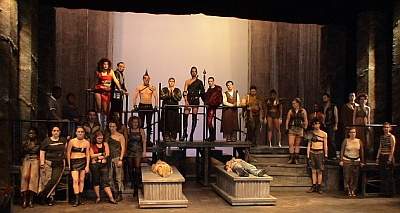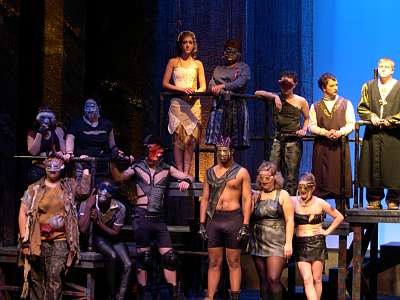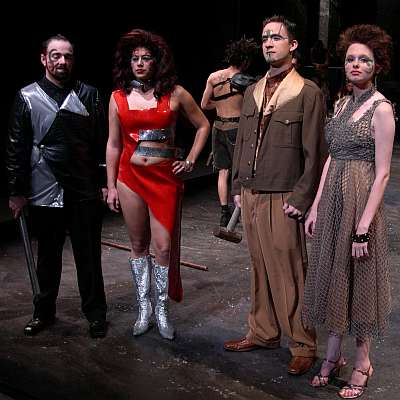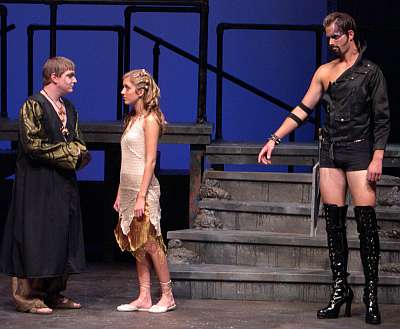
Department of Fine Arts
The University
Theatre Presents:
Romeo and Juliet
by William Shakespeare
October 27-29, 2005
Fine Arts Theatre
Hyman Fine Arts Center
Francis Marion University
 |
Department of Fine Arts The University
Theatre Presents:
|
The Francis Marion University Theatre will begin its 2005-2006 season with William Shakespeare's Romeo and Juliet. Written in the mid-1590s and first published in 1597, Romeo and Juliet is Shakespeare's first non-historical tragedy, and it is in many ways the richest and most mature of his early works. The writing bears many of the characteristics of Shakespeare's early work, with frequent use of end-rhymes and an abundance of descriptive, metaphoric imagery. Shakespeare did not invent the story of Romeo and Juliet. He did not, in fact, even introduce the story into the English language. The generally, and understandably, forgotten Arthur Brooks first brought the story of Romeus and Juliet to an English-speaking audience in a long and plodding poem that was itself not original, but rather an adaptation of adaptations that stretched across nearly a hundred years and two languages. Many
of
the details
of Shakespeare's plot are lifted directly from Brooks' poem, including
the meeting of Romeo and Juliet at the ball, their secret marriage,
Romeo's fight with Tybalt, the sleeping potion, and the timing of the
lover's eventual suicides. Such appropriation of other stories is
characteristic of Shakespeare, who often wrote plays based on earlier
works. Two examples are Richard III, which Shakespeare based in large
part on Thomas More's excellent history of that English king, and
Hamlet, which is based on two known sources: one from France, another
from medieval Denmark. Shakespeare's use of existing material as fodder
for his plays should not be taken as a lack of originality. Instead,
readers should note how Shakespeare crafts his sources in new ways
while displaying a remarkable understanding of the literary tradition
in which he is working.
Shakespeare's version of Romeo and Juliet is no exception. The play distinguishes itself from its predecessors in several important aspects: the subtlety and originality of its characterization (Shakespeare almost wholly created Mercutio); the intense pace of its action, which is compressed from nine months into four frenetic days; a powerful enrichment of the story's thematic aspects; and, above all, an extraordinary use of language. The Francis Marion University Theatre's winter production will be Hammerstone by Jon Tuttle, February 23-25, 2006. The final mainstage production will be The Actor's Nightmare by Christopher Durang, April 13-15, 2006. Reservations for Romeo and Juliet may be made beginning October 17 by calling the box office at 661-1365. The box office will be open to reserve seats Monday through Friday from 1 pm to 5 pm. All tickets are free to the public. Curtain is at 8:00. For additional information contact Mr. Gourley in FAC 110, 661-1545, agourley@fmarion.edu. Interested in working "behind the scenes"? Contact Mr. Granath in FAC 222, 661-1536, dgranath@fmarion.edu.
 photography
by
A. Kiker and G. Gourley
Back to Fine Arts Home Page |
      |